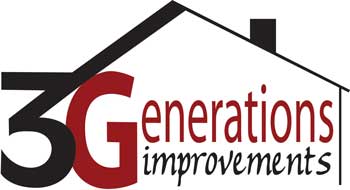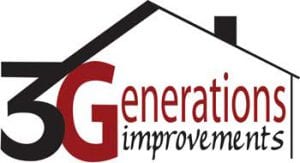While traditional vinyl siding is still popular in most Midwest states, and has a strong history throughout most of the U.S., it has definitely lost much of its share of the siding market to better performing products engineered wood siding.
With that being said, it is worth asking how vinyl siding compares to engineered wood siding like LP® SmartSide® products. Vinyl siding is still a viable option for builders, especially for those on a budget. In fact, one of the greatest benefits of traditional vinyl siding is that it is still relatively inexpensive. In addition, it’s virtually maintenance free, doesn’t rot, blister, chip or peel, and you never need to paint it.
But all this comes after establishing a stormy legacy in the building industry.
A Quick History of Vinyl Siding
Vinyl siding has been around almost as long as most people living today. Wikipedia offers this overview of the origins of vinyl siding:
“Vinyl siding was introduced to the exterior market in the late 1950s as a replacement for aluminum siding. It was first produced by an independently owned manufacturing plant called Crane Plastics in Columbus, Ohio. The process was originally done through mono-extrusion, a process of forming the profile from a single material into the desired shape and size. At that time, blending of colors was done manually.”
However, the original process struggled to produce and install a consistent, quality product. It wasn’t until the early 1970s that the siding industry succeeded in changing the formulation, which improved vinyl siding’s production speed, its impact resistance, and – probably most importantly from a sales perspective – the range of available colors.
Moving into the 1980s vinyl siding grew steadily in popularity among both homeowners and contractors, in large part due to its durability, versatility, and ease of maintenance. Compared to wooden siding, vinyl is huge savings for homeowners as it is not as expensive, requires very little maintenance, and never needs to be painted.
The Downside of Vinyl Siding
Possibly the biggest shortcoming of traditional vinyl siding today isn’t so much the material itself, but the superior products that compete with it.
For example, a comparison of polymer insulated siding with traditional vinyl siding is instructive. The newer exterior siding product is 300 percent more impact resistant than vinyl siding, reduces noise 45 percent more than vinyl siding, and can withstand winds up to 130 mph, which is the top end of a Category 3 hurricane.
According to an article on the website The Spruce:
“Manufacturers brag that high quality siding lasts about 20 to 30 years. However, depending on your climate, siding could look worse-for-the-wear at around 10 to 15 years. The color fades and the planks become dirty. Painting isn’t an option, since it will likely peel and crack after a short time, and pressure washing could be disastrous if water enters your house through cracks and crevices around the siding.
Siding planks often split or break due to the expansion and contraction caused by temperature changes. If your lawnmower sends a rock flying at your house, it will cause quite a bit of surface damage to the siding. It can’t be patched; the entire plank must be replaced.”
One other more recent concern is the potential health risks of the material itself. Vinyl siding is comprised primarily of polyvinyl chloride (PVC). To be sure, simply having vinyl siding on your home does not create any type of health or environmental risk. However, some observers fear that burning vinyl can release toxins and carcinogens.
However, builder and author, Fernando Pagés Ruiz, notes that,
“Vinyl siding opponents often claim that the siding will smoke when burning and that the vapors are highly toxic. Even if you have a fire lapping at the siding at the nearly 700°F you would need for vinyl to burn, the toxic potency of vinyl would not be considered to be any different from that of wood when burning, since all burning materials release highly toxic smoke.”
Ultimately, it seems that the real health concerns for vinyl siding may be limited to the manufacturing facilities themselves, yet even those have been thoroughly regulated by the EPA and are considered as “clean” industries as a result.
The Overwhelming Advantages of LP® SmartSide® Engineered Wood Siding
LP® SmartSide® is essentially composed of chipped Aspen wood combined with a sophisticated resin formula as a binding agent along with zinc borate as a treating element and a phenolic acid overlay. The result is a product that boasts superior moisture protection and strength.
It comes in longer lengths than a common comparable product (Hardie), weighs less, and is less expensive to install since there are no special cutting tools required. Contractors find it easy to work with since it is essentially the same as working with wood. LP has quietly won over more contractors, builders, and homeowners every year. LP had its eye on showing advantages to James Hardie from day one.
LP® SmartSide® is the result of an innovative manufacturing process that combines solid engineering and advanced components to produce an engineered wood product that can resist the most extreme elements. And that also includes baseballs, rocks and large hail!
The SmartGuard® process LP® uses to manufacture their SmartSide® siding product helps keep out moisture for long-term durability and structural strength in harsh weather. The steps taken in the SmartGuard® process create an advanced, engineered wood material that is resistant to fungal decay and termites, even in harsh environments. There are four essential components that work together to provide protection against termites and fungal decay:
- Waxes – Special water-resistant waxes coat each strand of wood chip for enhanced durability in wet or humid environments.
- Resin and Binders – High resistance to impact damage comes from the industrial-grade binders and resins. The SmartGuard® treatment can withstand common airborne debris such as hail, sticks and golf balls.
- Zinc Borate – Zinc borate treatment has long been proven to effectively resist damage from termites and fungal decay. A naturally occurring additive that is safe for children and pets, it provides long-lasting performance that preserves the look of LP® SmartSide® products.
- Resin-Saturated Overlay – A final layer of protection against the elements is the resin-saturated overlay that resists moisture intrusion while providing a durable base for quality paint adhesion and beauty.
While traditional vinyl siding may still have its adherents, when it comes to any kind of side-by-side comparison of the durability and qualities of vinyl and LP® engineered wood siding and trim products, there really is no comparison. Vinyl simply cannot compete on the same level.
LP® SmartSide® siding also comes in a full range of profiles, including lap siding, panel siding and cedar shake siding. 3 Generations Improvements is a Master Member with LP – their highest designation! We invite you to learn more about LP® SmartSide® by giving us a call today.

